With Sentinel-1A now in orbit around Earth since April 2014, it is time for its identical sister satellite, Sentinel-1B, to make up the two-satellite constellation.
The pair of satellites will orbit 180° apart to optimise revisit times and global coverage for the Copernicus services. As a constellation, the mission will image the entire Earth every six days.
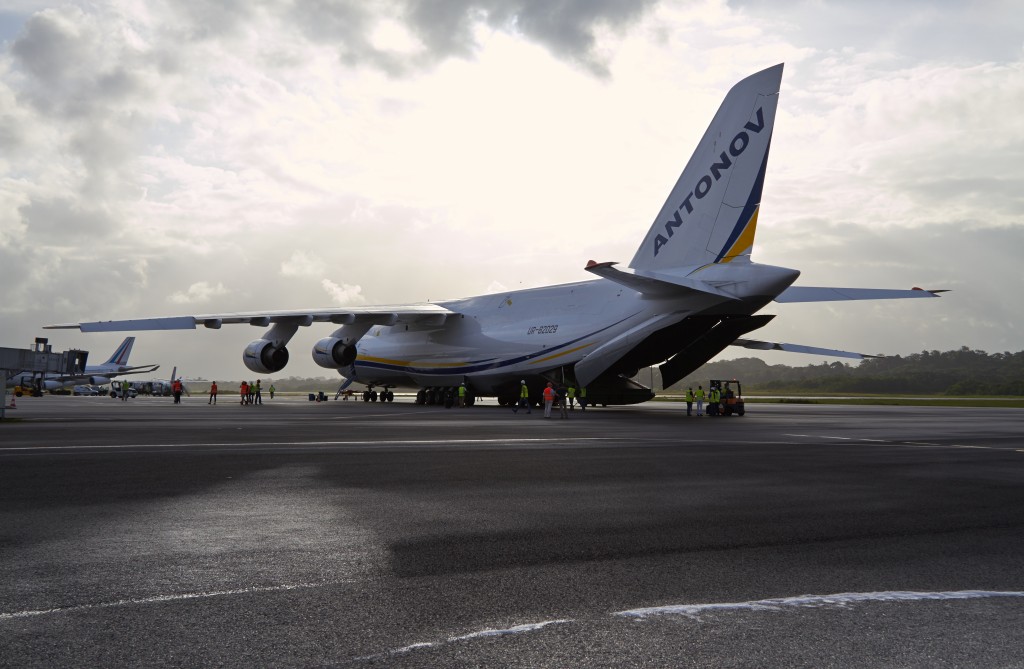
Sentinel-1B arrives in Cayenne. (ESA)
The satellites each carry an advanced radar instrument to provide an all-weather, day-and-night supply of imagery of Earth’s surface.
As with Sentinel-1A, Sentinel-1B will be taken into orbit on a Russian Soyuz rocket from Europe’s Spaceport near Kourou in French Guiana. The launch site is known locally as the Centre Spatial Guyanais (CSG).
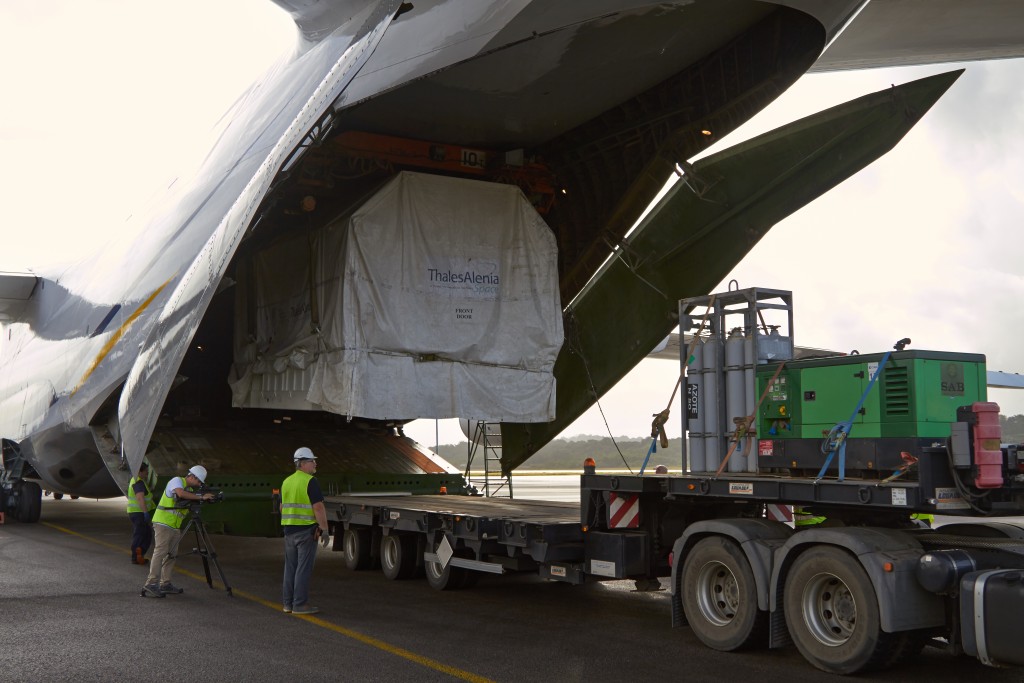
Unloading the satellite container. (ESA)
Liftoff for Sentinel-1B is scheduled for 22 April 2016.
With liftoff a matter of weeks away, the campaign to prepare this latest satellite for launch has just started. The Sentinel-1B satellite arrived at Cayenne airport at 07:30 (local time) yesterday and was then transported to the launch site.
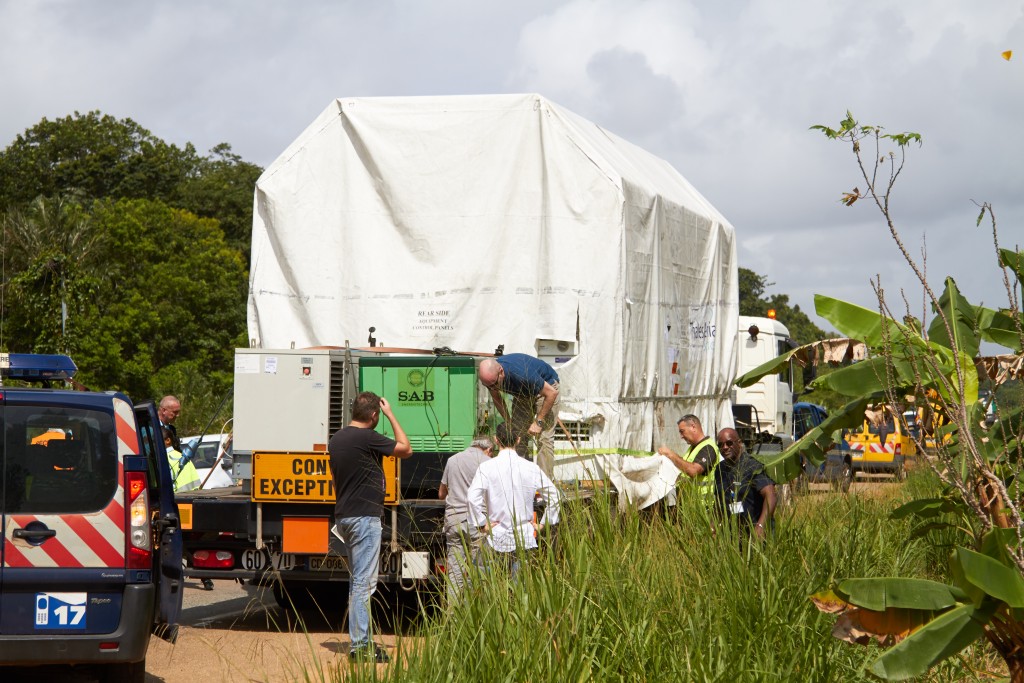
Checks on route. (ESA)
Following the usual technical stops on route, the convoy arrived at CSG where the spacecraft transport container was moved into the airlock. The support equipment was all moved into the storage hall in building ‘S-5C’.
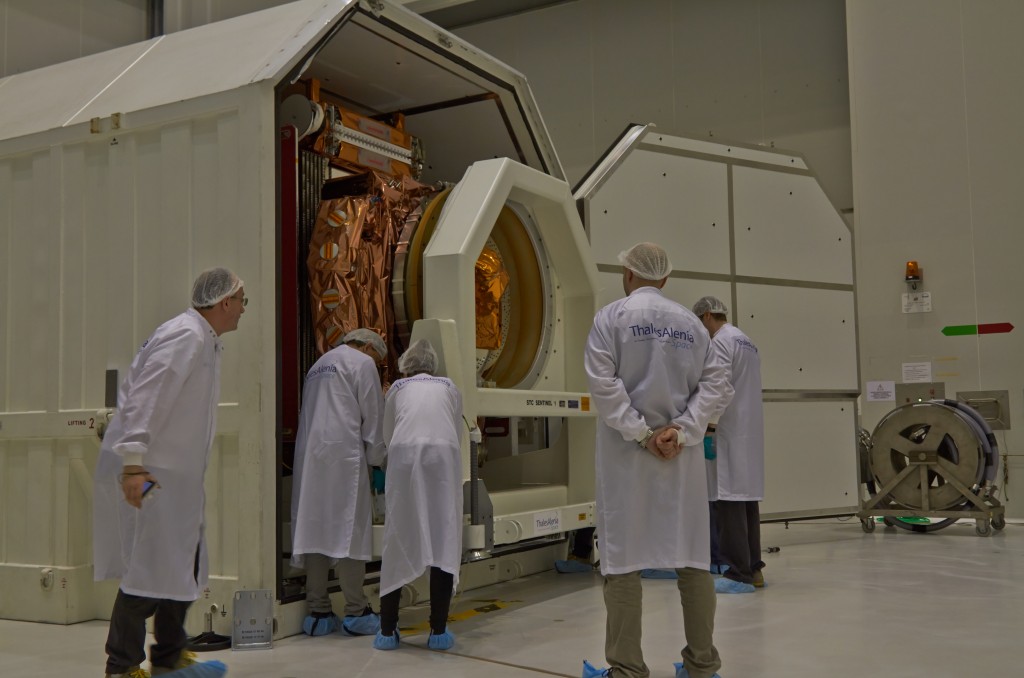
Removing Sentinel-1B from container. (ESA)
After stabilising for four hours the container was opened and the satellite moved into the ‘high bay’ where it will spend the coming weeks being tested and prepared for liftoff.
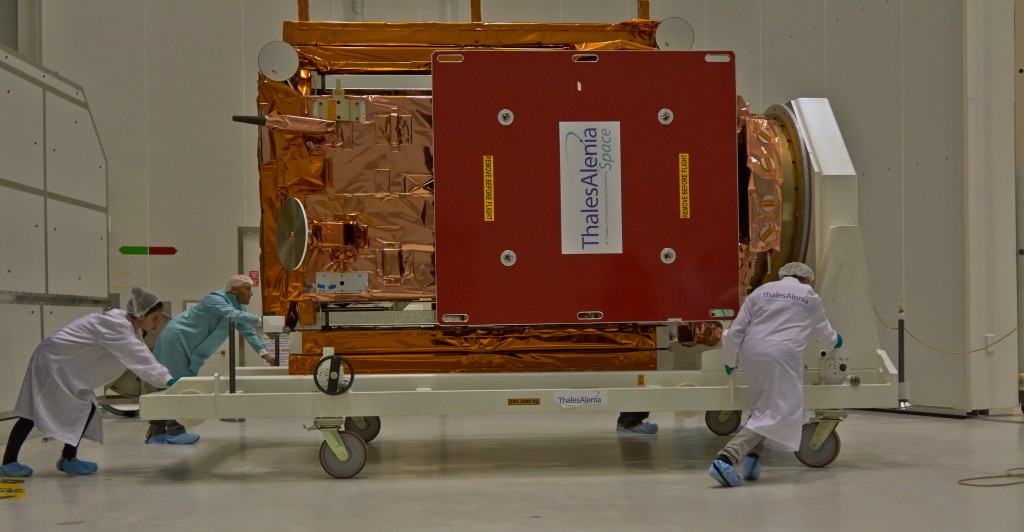
Pushing Sentinel-1B towards the ‘high bay’. (ESA)
Offering ‘radar vision’, the mission benefits numerous services that relate to the monitoring of Arctic sea-ice extent, routine sea-ice mapping, surveillance of the marine environment, including oil-spill monitoring and ship detection for maritime security, monitoring land-surface for motion risks, mapping for forest, water and soil management and mapping to support humanitarian aid and crisis situations.
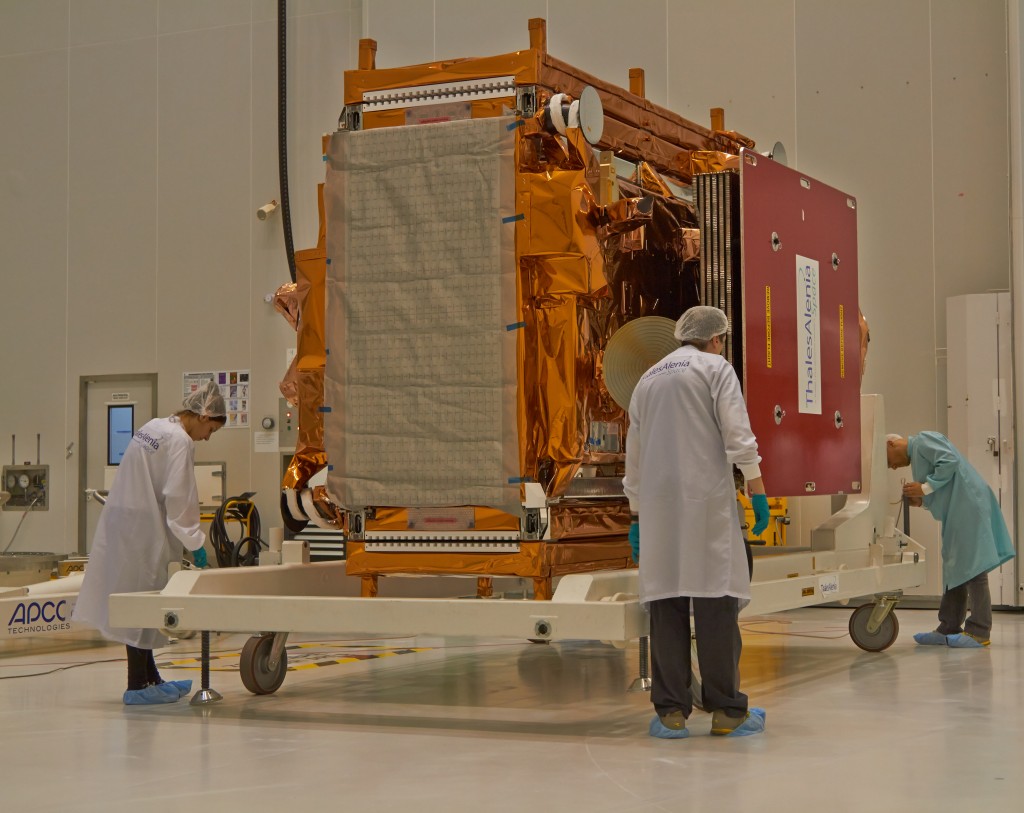
Sentinel-1B will spend the next weeks being prepared for launch. (ESA)
For information about our Sentinel-1 mission visit www.esa.int/sentinel-1
From the ESA Sentinel-1B team in Kourou.

Discussion: no comments